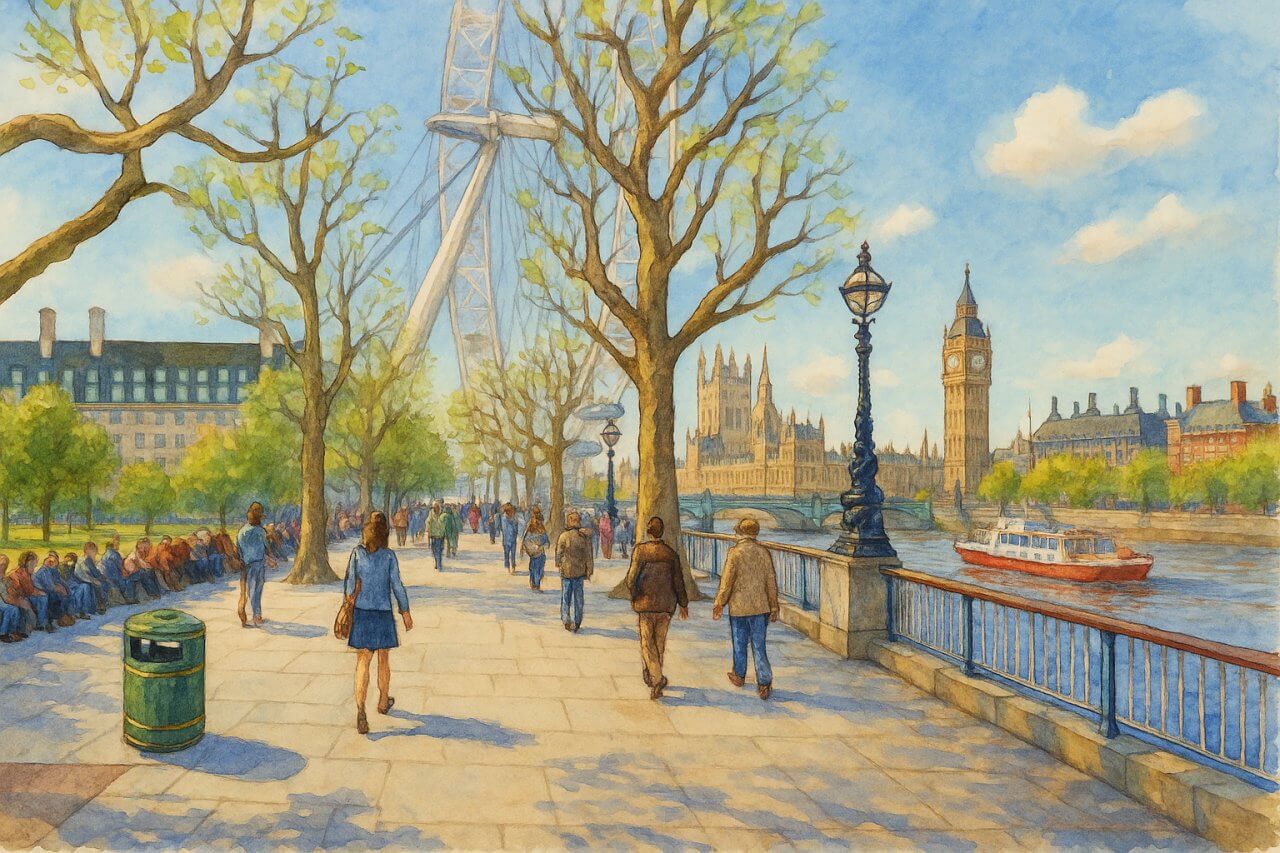
South Bank, London
South Bank: London's Cultural Riverside Playground
A Riverside Destination That Captures the Soul of London
Few places in London offer the same blend of creativity, leisure, and iconic views as the South Bank. Stretching along the southern bank of the River Thames, this area is where culture meets community, where skyline views are paired with Shakespeare, and where world-class attractions are just steps apart. Whether you’re here to explore a gallery, watch a play, ride the London Eye, or simply soak up the atmosphere, South Bank has a way of captivating every visitor.Where Is South Bank?
South Bank is located on the southern side of the River Thames, directly opposite the City of Westminster and the West End. It extends roughly from Westminster Bridge in the west to Blackfriars Bridge in the east.It’s primarily within the London Borough of Lambeth, although parts toward the eastern end cross into the Borough of Southwark. This central position makes it easily accessible and one of London’s most walkable and visited riverside areas.
Size, Population, and Demographics
South Bank is not formally defined as a residential district with clear borders, so population estimates vary. The broader area encompassing South Bank—including parts of SE1—has a population of around 60,000, with thousands more working in and visiting the area daily.Demographically, the South Bank reflects the diversity of Central London: an urban mix of artists, professionals, hospitality workers, and international visitors. It is known more as a cultural and tourist district than a residential hub, but modern developments have added some high-end apartments to the mix.
History of South Bank
The South Bank has a long and colourful past. In medieval times, this riverside strip lay outside the jurisdiction of the City of London, which allowed for less-restricted entertainment. Taverns, bear-baiting arenas, and theatres thrived here—including those patronised by Shakespeare and his contemporaries.The name “South Bank” only came into popular use in the mid-20th century, especially after the Festival of Britain in 1951, which was hosted here to promote British arts and innovation. The festival led to the development of the Royal Festival Hall and marked the beginning of South Bank’s transformation into a centre for culture and performance.
Neighbouring Areas
South Bank is surrounded by several notable London neighbourhoods:- Waterloo – to the south, a major transport and business hub
- Southwark – to the east, known for the Globe Theatre and Borough Market
- Lambeth – to the west and south, including Lambeth Palace and residential areas
- Westminster – directly across the river, with Parliament and Big Ben
Major Roads in South Bank
The area is pedestrian-friendly, but a few key roads support vehicle and bus access:- York Road – runs parallel to the Thames and connects Waterloo with Westminster Bridge
- Belvedere Road – closer to the river and lined with many South Bank attractions
- Stamford Street – on the inland edge, linking Waterloo Bridge to Blackfriars
Key Attractions and Landmarks
South Bank is one of London’s most visited areas thanks to its concentration of sights. Key landmarks include:- London Eye – Europe’s tallest cantilevered observation wheel, offering spectacular views
- Royal Festival Hall – part of the Southbank Centre, home to concerts and performances
- National Theatre – world-renowned for innovative stage productions
- BFI Southbank – British Film Institute’s main screening venue and archive
- Sea Life London Aquarium – popular with families and located in County Hall
- Southbank Centre – encompassing multiple arts venues including Hayward Gallery
- Gabriel’s Wharf – artisan shops and eateries in a charming riverside setting
Character and Atmosphere
South Bank is a cultural and recreational district. It is home to major arts institutions, public performance spaces, outdoor sculptures, and scenic walking routes.It has a strong pedestrian-first design, making it ideal for tourists and locals to stroll along the river, relax by the Thames, or enjoy open-air dining. The atmosphere is creative, inclusive, and distinctly cosmopolitan.
Real Estate and Property Prices
Although South Bank is not primarily residential, several luxury developments have sprung up in recent years, particularly near the former Shell Centre and along Upper Ground.As of early 2025, property prices in South Bank average around £1,300–£1,600 per square foot.
- One-bedroom flats may start at £700,000–£850,000
- Larger riverside apartments can exceed £2 million
Transport and Tube Stations
South Bank is very well connected by public transport:- Waterloo Station (Bakerloo, Jubilee, Northern, Waterloo & City lines)
- Embankment Station (across the river, accessible via the Jubilee footbridges; Bakerloo, Circle, District, Northern lines)
- Southwark Station (Jubilee line, near the eastern end of South Bank)
- Blackfriars Station (Thameslink and District/Circle lines)
Fun Fact
During the Festival of Britain in 1951, the Skylon—a futuristic-looking metal sculpture—became an iconic symbol of modernity. Though dismantled in 1952, its memory lives on in South Bank lore, and some believe its remains were thrown into the Thames!Quick Facts
Location: Southern bank of the River Thames, between Westminster and Blackfriars Bridges
Boroughs: Lambeth and Southwark
Population: Approx. 60,000 in surrounding SE1 area
Main Character: Cultural, recreational, and tourist-friendly
Key Attractions: London Eye, National Theatre, Royal Festival Hall, BFI
Major Roads: York Road, Belvedere Road, Stamford Street
Nearest Stations: Waterloo, Southwark, Embankment, Blackfriars
Average Property Price (2025): £1,300–£1,600 per sq ft
Fun Fact: The 1951 Skylon sculpture symbolised Britain’s postwar optimism
Boroughs: Lambeth and Southwark
Population: Approx. 60,000 in surrounding SE1 area
Main Character: Cultural, recreational, and tourist-friendly
Key Attractions: London Eye, National Theatre, Royal Festival Hall, BFI
Major Roads: York Road, Belvedere Road, Stamford Street
Nearest Stations: Waterloo, Southwark, Embankment, Blackfriars
Average Property Price (2025): £1,300–£1,600 per sq ft
Fun Fact: The 1951 Skylon sculpture symbolised Britain’s postwar optimism
Map of South Bank, London

Painting of South Bank, London (View image in full size)